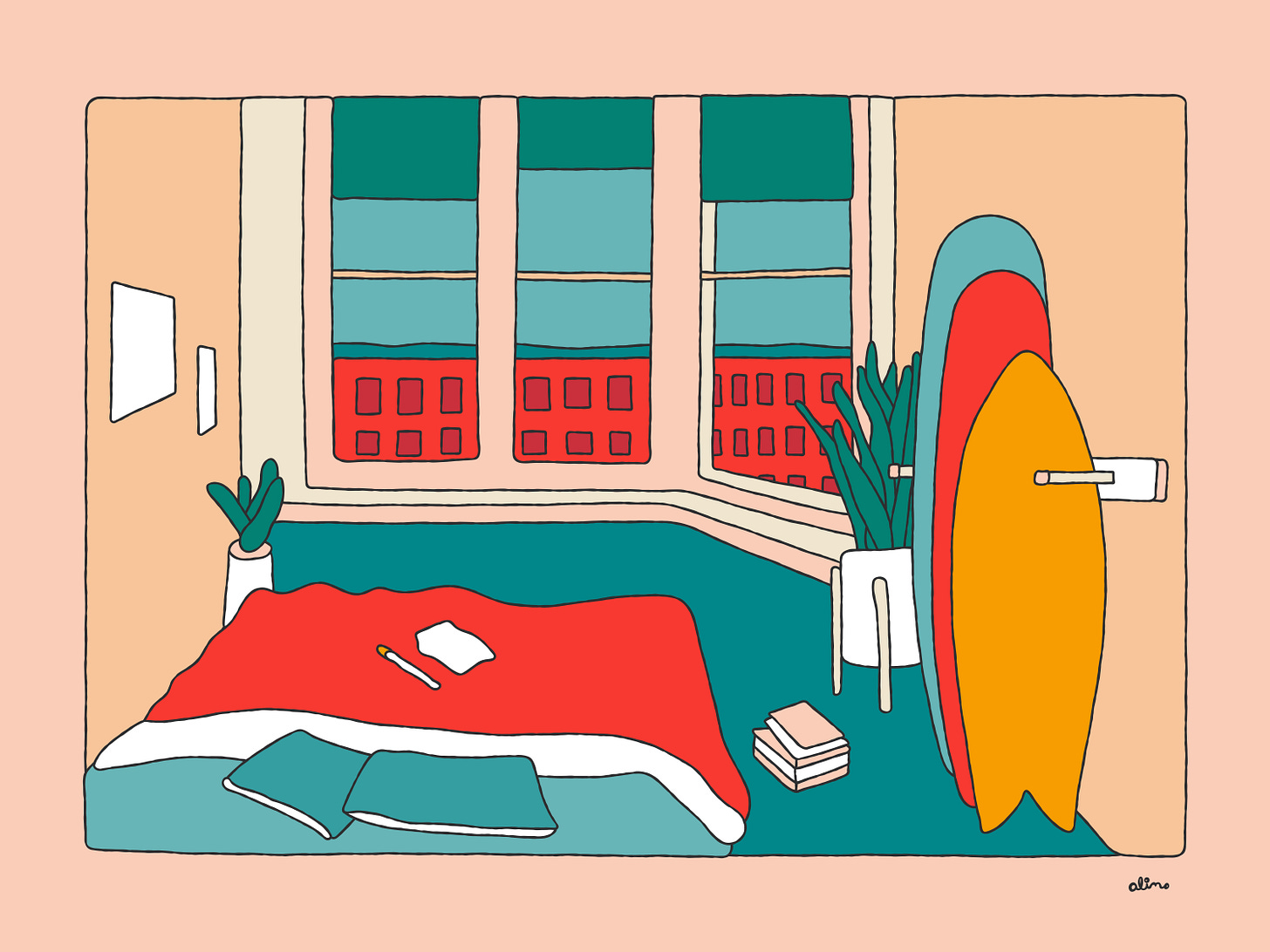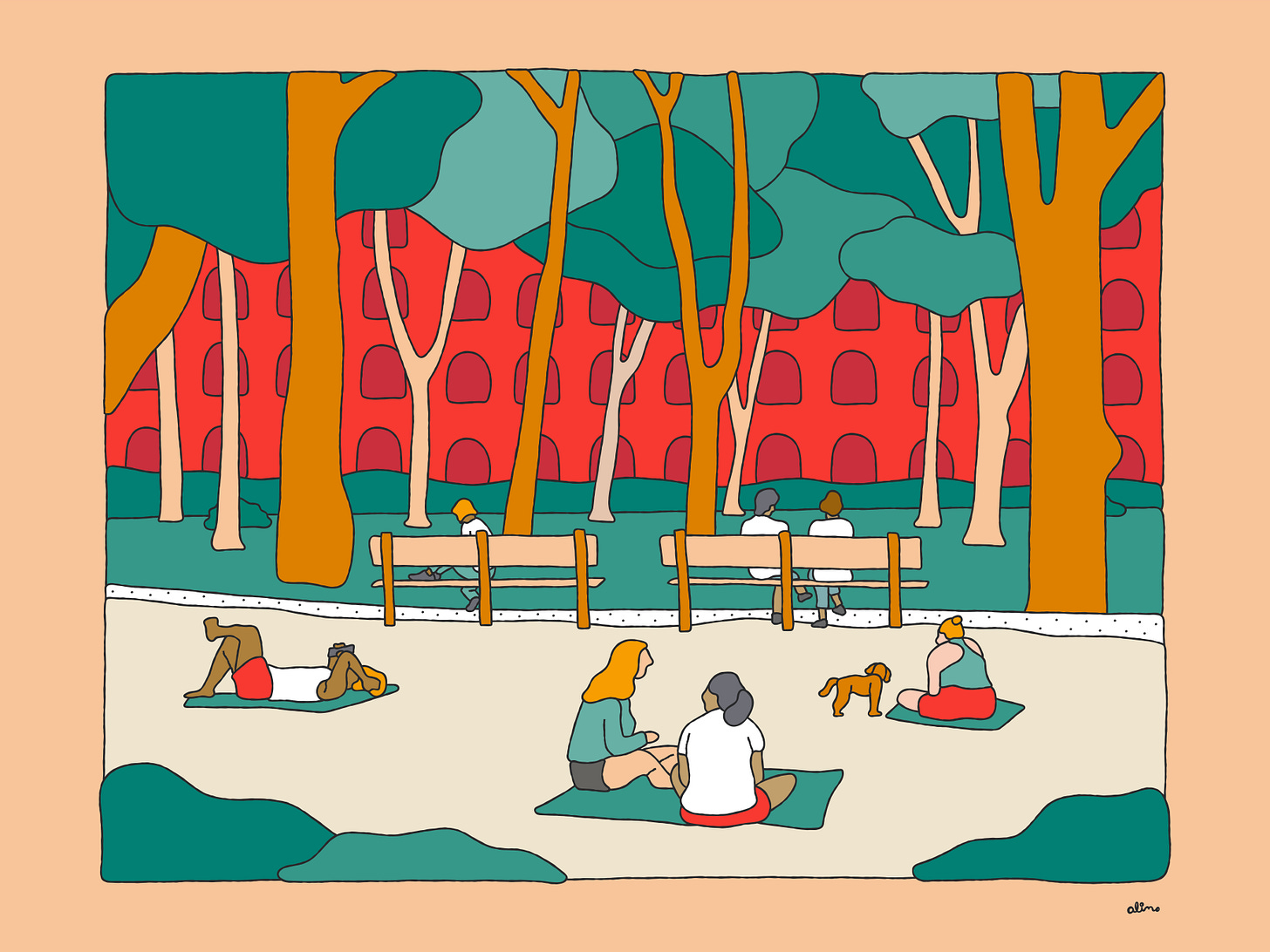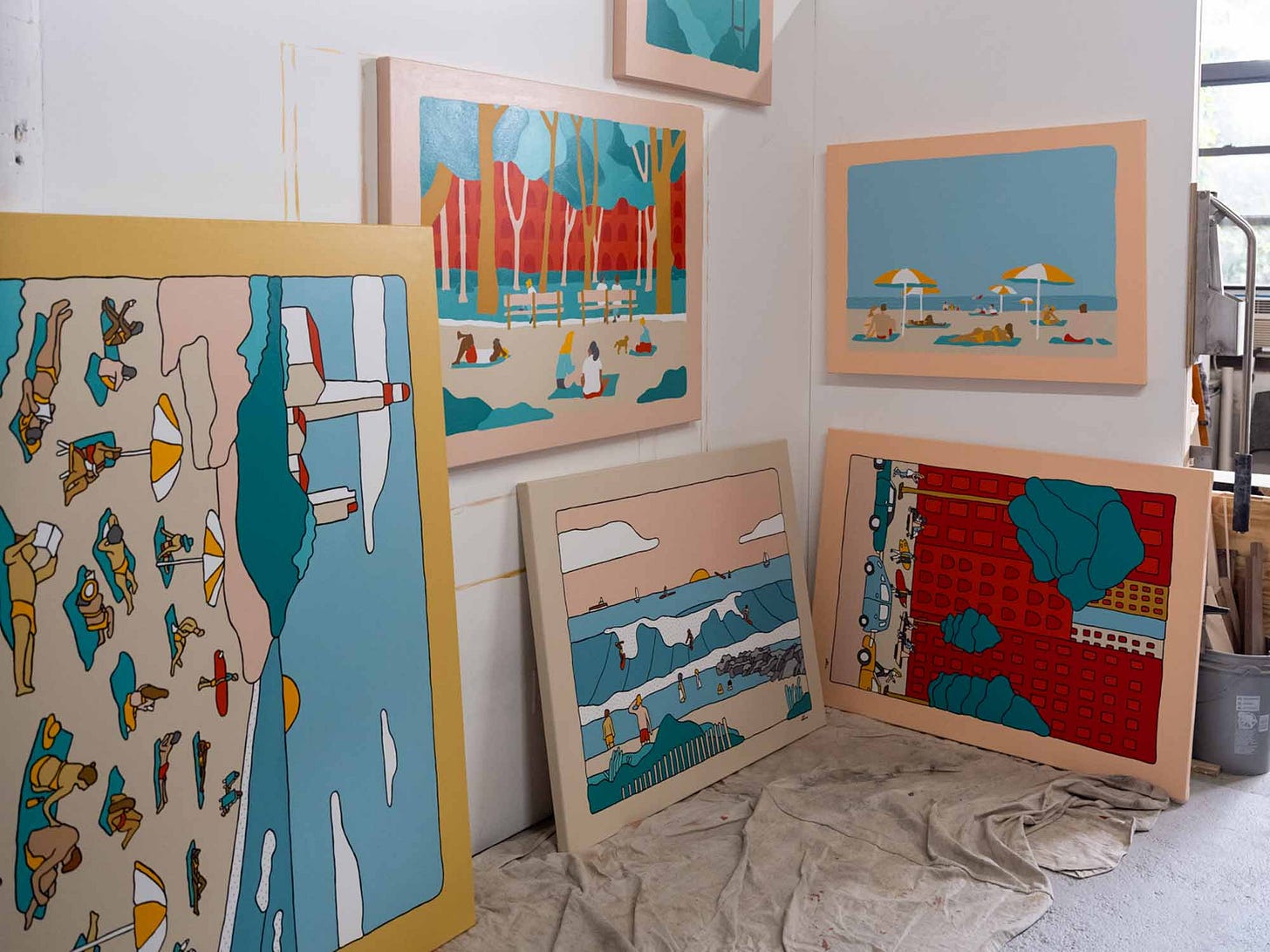Bridging Web2 with Web3: Alimo's Artistic Embrace of Technology
Why merge Web2 with Web3 technology? Hear the real experience from artist Alimo

As an artist who has been creating work for the past decade, my artistic journey has taken many different paths. It all began when I was just a rugrat, drawing for the pure enjoyment of it. As I grew older, I stumbled upon creating a clothing brand almost by accident. I created one drawing, ordered 50 t-shirts, and got friends and family to buy them. After that, I applied for an art fair called 'West Coast Craft' and got accepted with just a few thumbnails of what I've created. It was wild. I had 6 months to create a full collection, along with a booth design to help represent what Alimo was.
The art fair put me on the map in many ways and was super successful. It opened doors to new collaborations with brands, ultimately leading me to venture into clothing, merchandise, and prints. This spun out my work organically being in retail shops all around the world.
As an outdoor enthusiast, I always try to leave no trace behind and be as sustainable as possible. When I got into this industry, I made it a focal point to create, and find factories that share a similar ethos. The result led to the development of products that were plastic-free and as sustainable as possible.
However, I came to realize that to be truly sustainable, you just shouldn't produce anything. This realization challenged my business model, but I had a lot of internal questions with myself trying to figure out. How could I continue creating and ensuring financial stability? The company was growing, yet I wasn't feeling comfortable with it.
I experimented with different approaches to address this dilemma. I attempted to change the model to a pre-order system to better manage inventory, but customers desired immediate availability of the goods. I then shifted to limited edition runs on my clothing, and print-on-demand for my prints to again help with inventory. This worked and really helped.

When the pandemic happened, I began learning about web3, and it completely reshaped my business model. Folks were now consuming goods in a different way, and it sparked an idea in my mind: "If consumers needed to consume, they could consume all their goods in the digital space. Then we could let Mother Nature heal while we produce fewer physical goods. It could be a win-win for both parties." This concept kind of blew my mind in a lot of ways. I thought of Black Friday where people just buy for no reason. Why not offer them the opportunity to do this in the digital space?
At the time, the sustainability issue of ETH was a concern for me, but after I delved deeper and learned about ETH2 and how the code was being simplified to proof of state, I discovered that model was going to cut the energy by 99.5%. The more technology grows, the better and more efficient things get. This was another "a-ha" moment for me to keep learning about this technology.

Over the years, I started to drop more digital work than producing clothing for these reasons. In fact, I paused it in a lot of ways. It pushed me into this limited edition model where the supplies can run out and that was it.
During this time, I was still doing a lot of commissions with my fine art. It’s my favorite thing and most creatively challenging pursuit, both mentally and physically.
At the same time, I was creating these digital drops. I was trying to figure out how I could utilize this technology together but kept hitting roadblocks so I initially kept them separate. As time went forward, I started to announce these physical drops and it started to resonate with folks. However, the limitations of tokens posed a challenge. You can only show one image at a time. With these physical + digital drops, I would go on and create a separate website that showcased photos of both items, then educate people that they get a pair when they purchase. It was super frustrating.
To address this issue, I finally reached out to a developer with this idea: how can we create a multi-image token to help showcase these ideas?
We ended up creating this interactive art piece where users can click through the image like a slideshow. That way you can show both the digital and the physical. It’s amazing.
Then yes, problem two. If someone buys a physical painting and sells the digital one, who would be the rightful owner? At the most elementary level, if they sold the digital, technically they would be a thief still holding onto that physical. It was more an honor system than anything, and currently still is.
To push the boundaries further, we developed an interactive certificate of authenticity to help cement the proof of ownership. On each purchase, that new owner and price (in both USD or ETH) are automatically stamped on-chain. Similar to reading Etherscan, this is more of a visual certificate on the image. This visual certificate is attached to the slideshow at the end. It has simple terms saying both the physical and digital are a pair and must stay together.
When I started to introduce these new concepts, it was a bit confusing to my web2 audience. I was sold on using technology with my art and I was asking each buyer to create a wallet in order to purchase. However, the friction of creating a wallet and understanding what ETH was ended up being a huge blocker. Consequently, I began researching ways to bridge the gap between the web2 and web3 worlds, allowing both to seamlessly purchase my art.
Moving forward to my upcoming solo show 'Solitude Safari,' presented by Ilegal Mezcal on July 8th, I made it a point to create a physical show that has tech under the hood. Meaning, if you see the art, you are viewing art. Not a screen, not an NFT, just art. If you look further, you can then see that the NFT technology is built in automatically.
So what is my new model?
For all my physical paintings, I use an NFC chip that helps serve as the bridge to the digital piece. When users scan the chip, it takes them to the corresponding digital asset.
I then set up a system in the backend that allows anyone to purchase my artwork using either USD or ETH, making it as frictionless as possible. If the buyer doesn't have a wallet, it's not a problem. After the purchase, we send them an email with instructions on how to claim their ownership.
This approach helps onboard all Web2 folks over to Web3 in a super easy way, without distractions or hiccups. It also helps remove that gross word of “NFT” and opens up the conversation on art and technology.
Folks don’t say MP3 for music anymore, they just say music. This should be the same for NFTs. People are purchasing art or anything else; they are simply buying xxx with technology under the hood. Easy peasy.
For these reasons, this is why I merge web2 with web3 in all my work.
Solitude Safari: Exploring NYC's Peaceful Paradises
A SOLO EXHIBITION BY ALIMO PRESENTED BY ILEGAL MEZCAL
10 Paintings will be available to purchase online July 5th
Each painting is paired with an NFT of the same artwork
The collection drops July 5th on
https://paintings.alimofun.com/
Opening party in NYC: July 8th 3-8pm
On view Saturdays and Sundays July 9-27 12-5pm | 38 Greenpoint Ave, Brooklyn, NY 11222









